Newmarket: Photos of the gallops, racecourse and stud
- Published
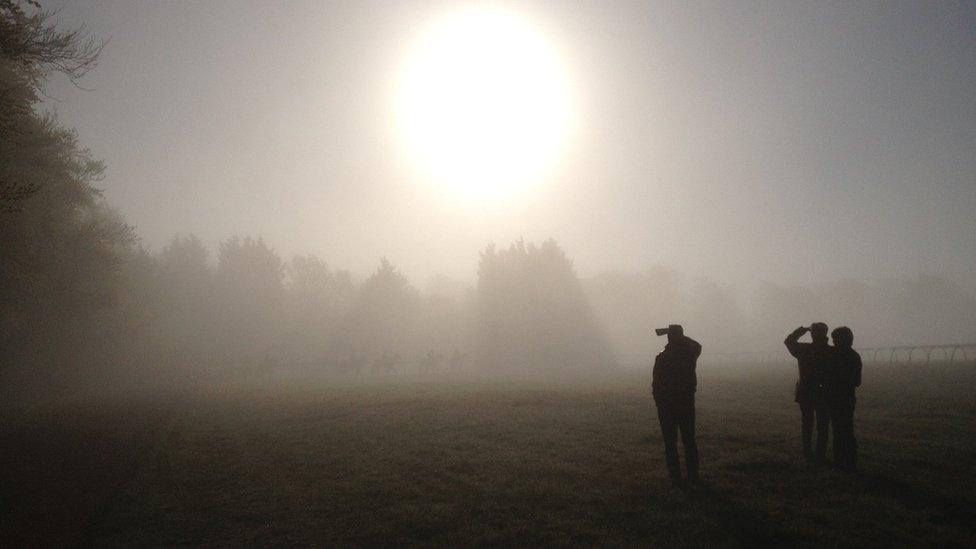
As British flat racing headquarters Newmarket gears up for a big weekend, BBC Sport's Frank Keogh goes behind the scenes at the town's gallops, racecourse, stables, stud and sales
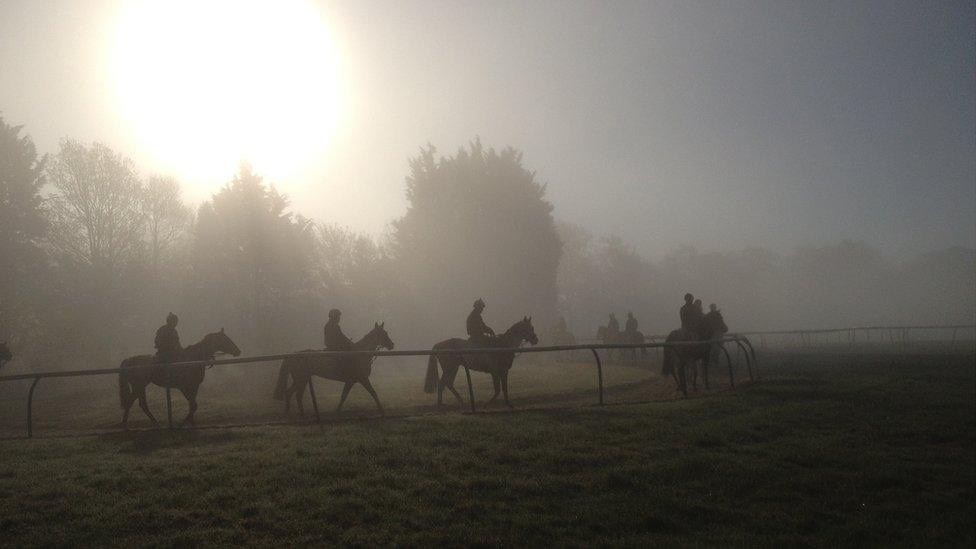
Dawn breaks on the renowned Limekilns gallops, and early-rising horses are readied for training runs ahead of races including the 2000 Guineas for colts on Saturday and Sunday's 200th running of the fillies' Classic, the 1000 Guineas

Mornings in this Suffolk town see thoroughbreds put through their paces at one of about 30 gallops. At Warren Hill, where the world's top-rated racehorse Frankel strutted his stuff before retirement in October 2012, a road dissects the lush grassy areas. Racehorses can reach speeds of more than 30mph, well inside the national limit for car drivers
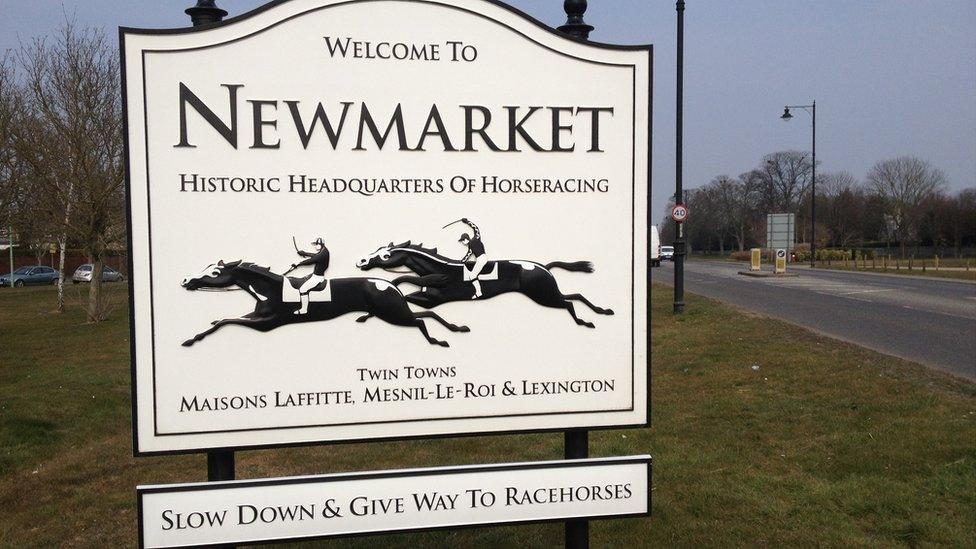
Twinned with the French racing commune Maisons-Laffitte, its neighbour Mesnil-le-Roi and American 'thoroughbred city' Lexington, Newmarket is an English town where horses have right of way

Traffic stops for thoroughbreds. There is roughly one racehorse for every six people in Newmarket. As well as 3,000 racing animals, another 2,500 horses are breeding at stud within a five-mile radius of a town which has about 18,000 human inhabitants
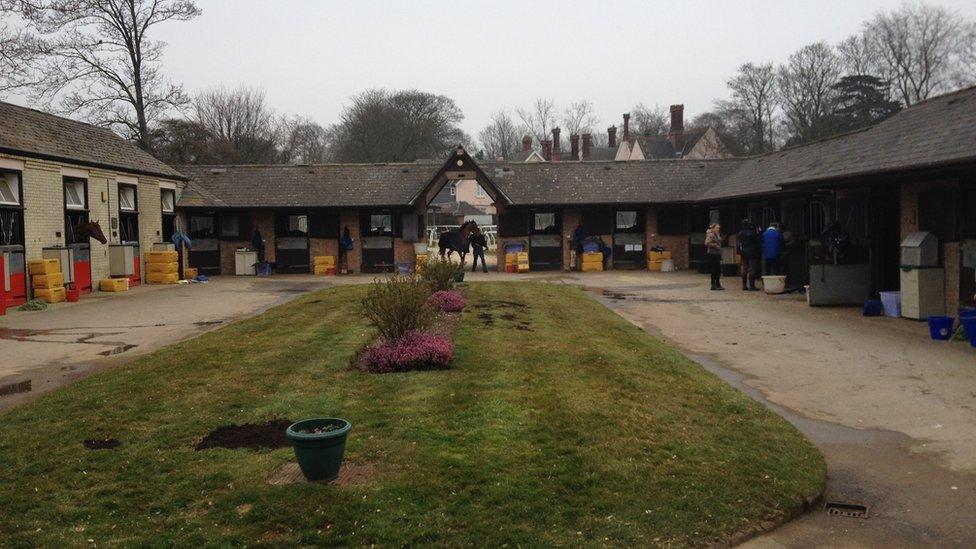
The Somerville Lodge yard of Classic-winning trainer William Haggas, victorious in the 1986 Epsom Derby with Shaamit and the Oaks with filly Dancing Rain 25 years later
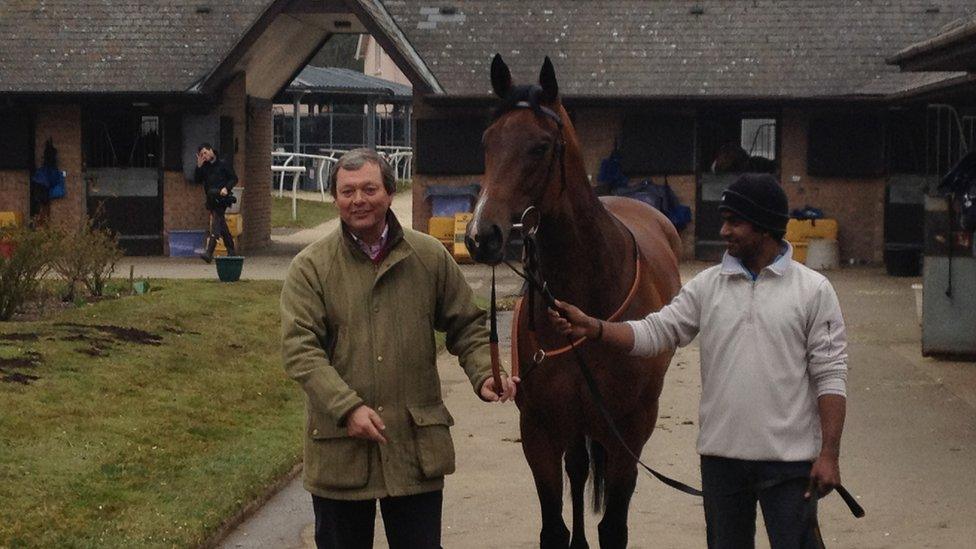
Trainer Haggas with one-time 1000 Guineas hopeful Rosdhu Queen and her groom, who shares the same name as Indian cricketer Mohammed Azharuddin. The filly is set to run at Royal Ascot in June

Just like humans, horses can also go on treadmills to keep fit . Maureen Haggas, wife of trainer William, explains they travel on a six-degree incline in three two-minute stretches at 36mph and enjoy the safety of a level surface rather than potentially uneven ground
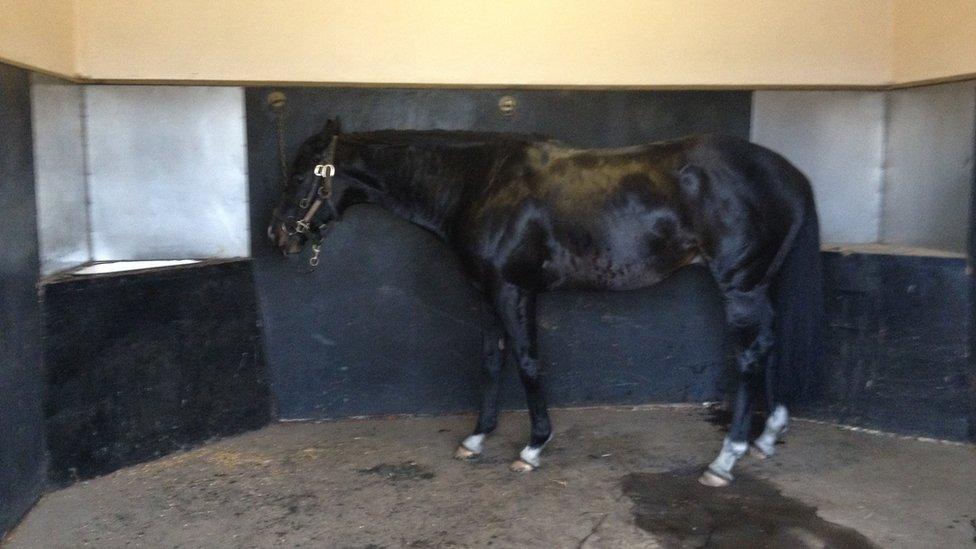
At the National Stud, stallion Dick Turpin is cleaned and preened ready for his date in the breeding shed. This picture was taken 30 minutes before he meets his mare. If all goes well, it should be all over in 30 seconds
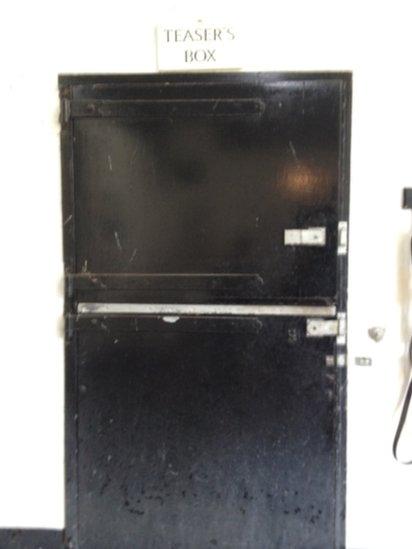
Before the stallion arrives, another stallion or pony is brought in to see the mare and ensure she is receptive to mating. The mare is brought into the breeding shed from the opposite side to the stallions in case the males get over-excited
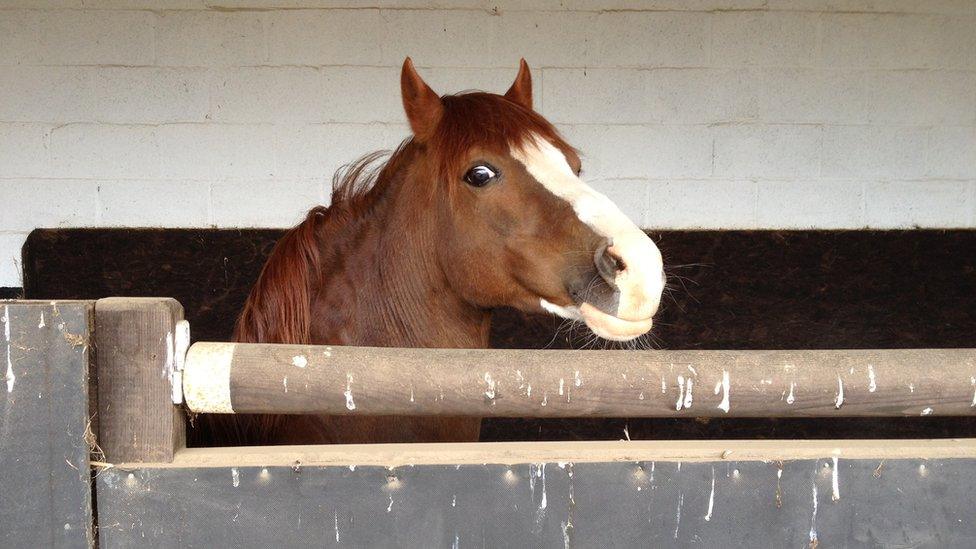
This teaser, who is looking somewhat sceptical, is called Roger. He is effectively the warm-up act for the main event - the stallion, who might 'cover' three mares a day at stud

A foal with her mother just two days after being born at the National Stud in Newmarket. The breeding season runs mainly from mid-February to June, with full-term pregnancies lasting 11 months
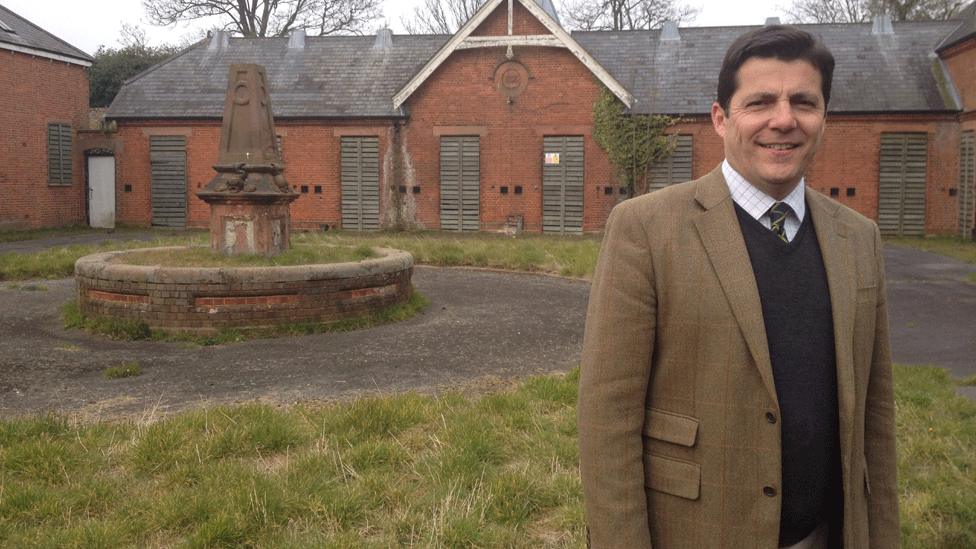
The National Horseracing Museum is a treasure trove of memorabilia. Director Chris Garibaldi says it will move to the nearby five-acre Palace House Stables, the one-time base of Charles II, in a £15m project with racehorses stabled there to give visitors a unique live experience as it attempts to become a major tourist destination
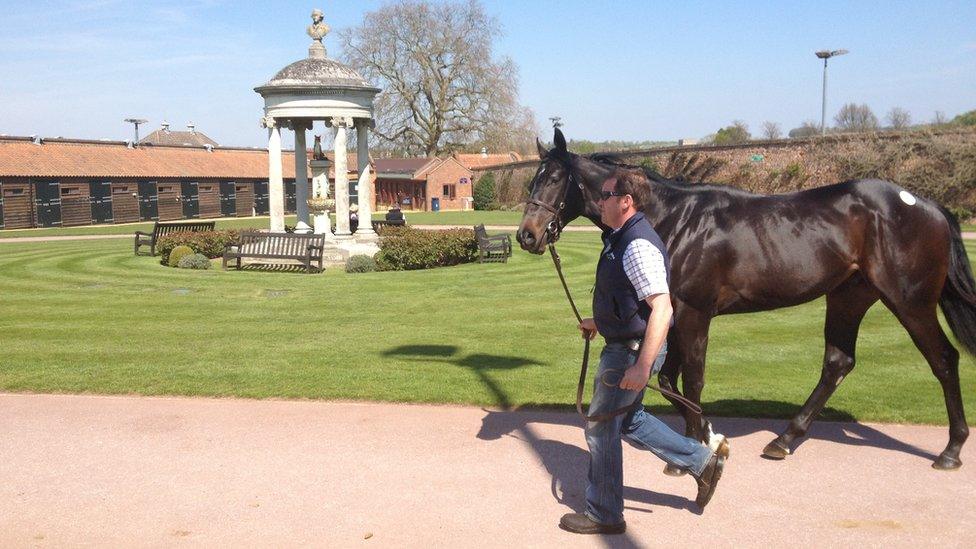
Over at the Tattersalls sales, a horse is paraded before entering the auction ring where buyers from all over the world will bid for what they hope may be a Classic winner of the future
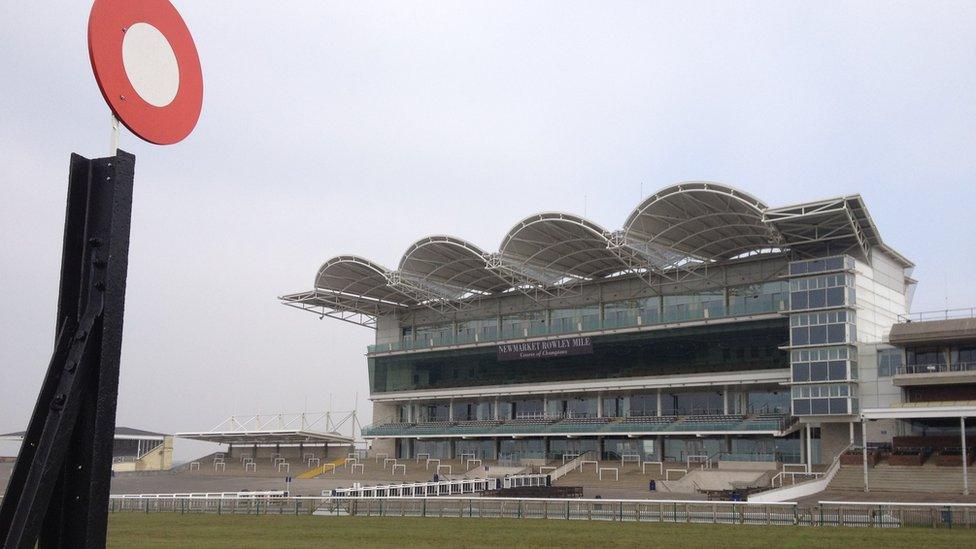
Many great racehorses have passed the winning line first at Newmarket's Rowley Mile racecourse, where recent winners of the 2000 Guineas have included Sea The Stars, Frankel and Camelot
- Published4 May 2013
- Published4 May 2013
- Published5 May 2013